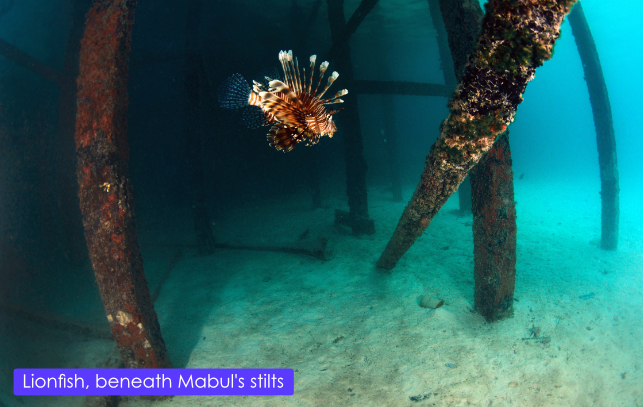The waters around Peninsula Malaysia provide for some truly
excellent diving potential, particularly around the islands of the east coast.
The northernmost of four premier dive locations off the
east coast, is the beautiful island chain of Pulau Perhentian, which has some
20 dive sites, of which ‘Sugar Wreck’, ‘T3’ and ‘Temple of the Sea’ are among
the favourites. Although suited to all levels of skill, the calm conditions
found here also make the area particularly suitable for beginners. The dive season runs from
early April through to late October.
A little way further south, the white powdery sands and
excellent visibility of the nine islands that make up the Pulau Redang chain
offer over 20 superb dive locations. These waters contain some 80% of the
species found within the so-called 'coral triangle', the richest marine
environment in the world. The dive season runs from March to October, with the
best visibility in the earliest months.
Part of Terengganu Marine Park, The islands around Pulau
Tenggol offer some of the very best diving along the east coast, but, because
the majority of its dive sites occupy deeper water accented with stronger
currents, many of which can be quite challenging, it is far less suited to
novice divers than the other island chains along this coast. ‘Amazing Grace’
and ‘Moonraker’ are among the most revered of its many sites. The dive season here runs from March to October.
With over 25 dive sites, the lovely and geologically
shapely Pulau Tioman and its surrounding islands offer great diving for all
levels. The most experienced divers will enjoy ‘Magician’s Rock’, ‘Tiger Reef’,
‘Batu Malang’ or the labyrinthine swim-through at Labas Island. The dive season
is from late February to early November, with the best clarity before June.
In contrast to the vastly superior east coast resorts,
the prevailing waterflow of the Malacca Straits limits the scope of diving potential on the
west coast of Peninsula Malaysia which, although certainly rich in marine life,
is often compromised by issues of visibility.
However, satisfactory diving is still possible at the
islands of Pulau Payaar Marine Park, 30 km south of Langkawi, which has 15 dive
sites. The area is best visited between November and June with water clarity at
its best between November and March.
Malaysian Borneo sits in the very heart of the most bio diverse marine environment on the planet in an area known as The Coral Triangle, and has some of the most remarkable dive sites anywhere.
One of the most famous, situated offshore from Semporna, and home to over 3,000 species of fish, Pulau Sipadan is regularly featured among the World’s very best dive locations, with a plethora of stunning dive sites best suited to experienced divers. Its pristine environment is protected by limited access and requires an entry permit of which only 120 are allocated per day, so early booking is a must.

In the past, underwater enthusiasts could stay on Sipadan itself, but for its protection, this is no longer the case. Visitors can stay on nearby Mabul Island or Kapalai, both famous macro diving spots, or perhaps Mataking, a popular honeymoon island. Diving is possible all year round, though the very best visibility and weather occurs during the dry season (March-October).
Another truly superb World class Dive location is Layang Layang Atoll, in splendid breath-taking isolation far out to sea and only reachable by light aircraft from Kota Kinabalu, with a single exclusive resort open only from March to August.
Situated off the northeast tip of Borneo, Pulau Lankayan is an excellent all-round location for its diversity of dive types, with reef, macro and wreck diving all found here. Part of a marine conservation area and home to a wealth of marine life, the island is also a turtle hatchery site. Although diving is open all year, the dry season from March to October offers the best conditions.
Just a short speedboat ride from Kota Kinabalu, the five islands of Tunku Abdul Rahman Marine Park make for good diving on an easy day trip and its relatively shallow reefs and gentle currents are highly suited to novices and beginners. Slightly further afield, and also available as a day trip, Pulau Tiga featured in the first series of the ‘Survivor’ TV reality show and also offers good leisure diving.
Dangerous, and definitely not for casual divers, Pulau Labuan, a three hour boat ride from Kota Kinabalu, was the scene of naval battles during the second world war and is the site of two war wrecks, one American and one Australian, which, together with two other large sunken vessels, are all now in various states of colonisation by marine life which provide the serious sport diver with an insightful adventure.